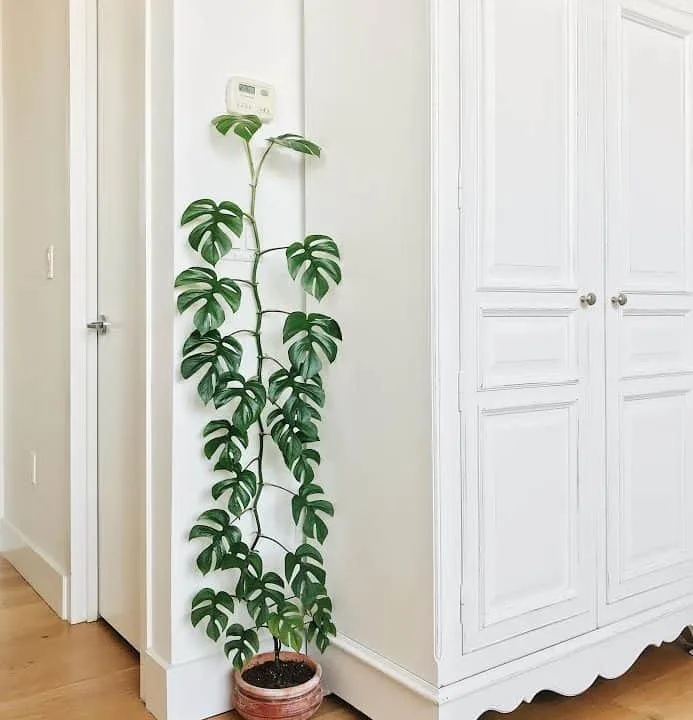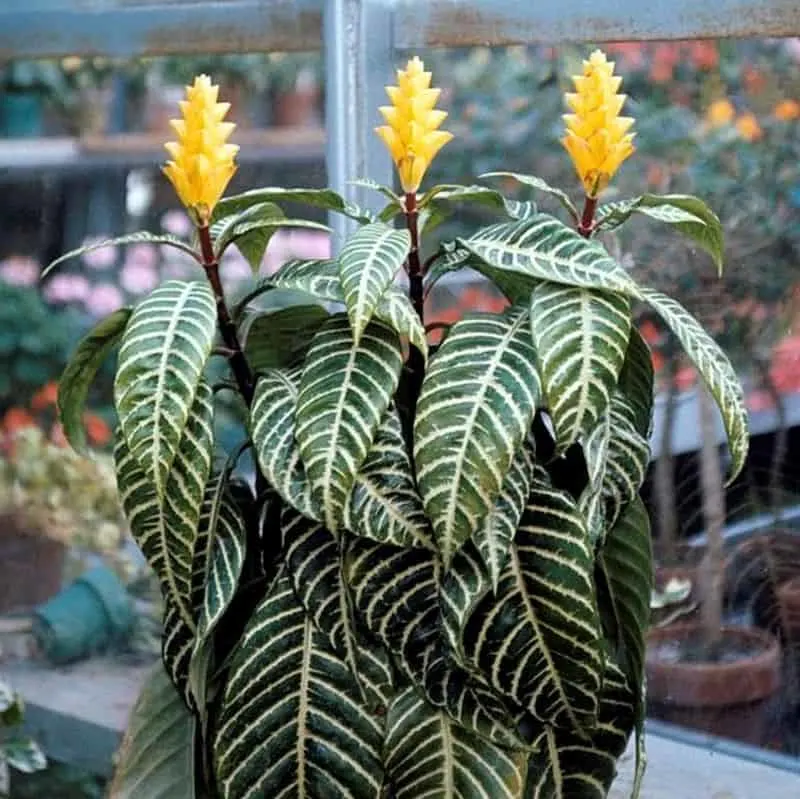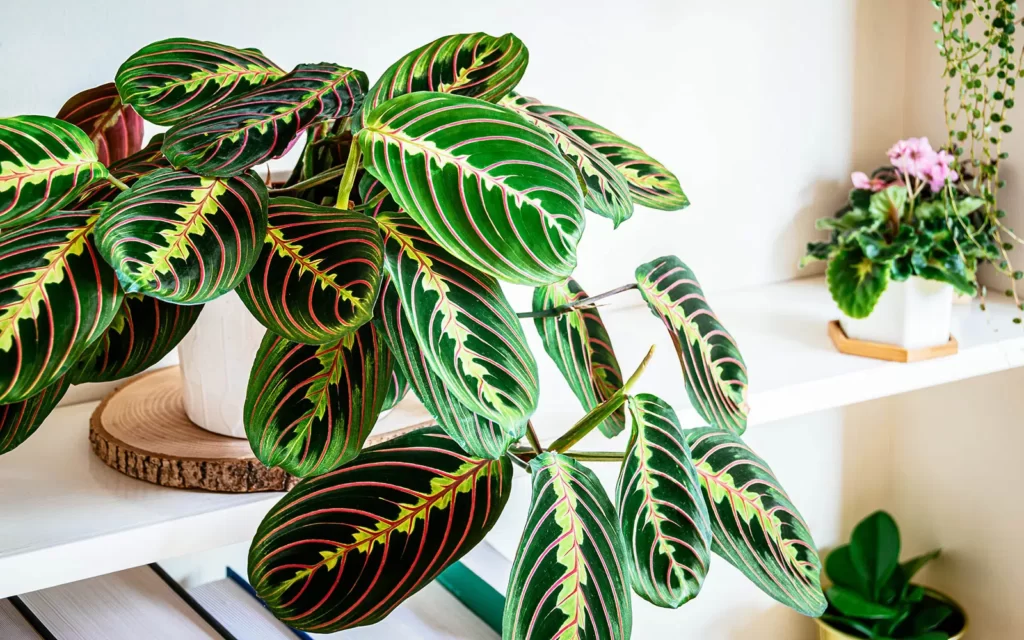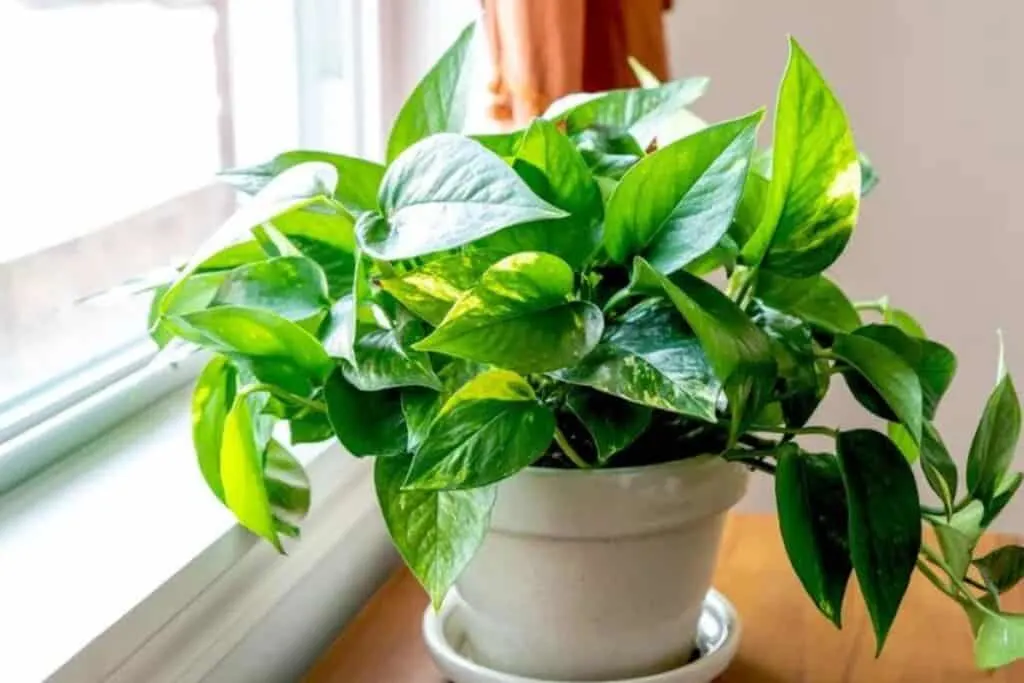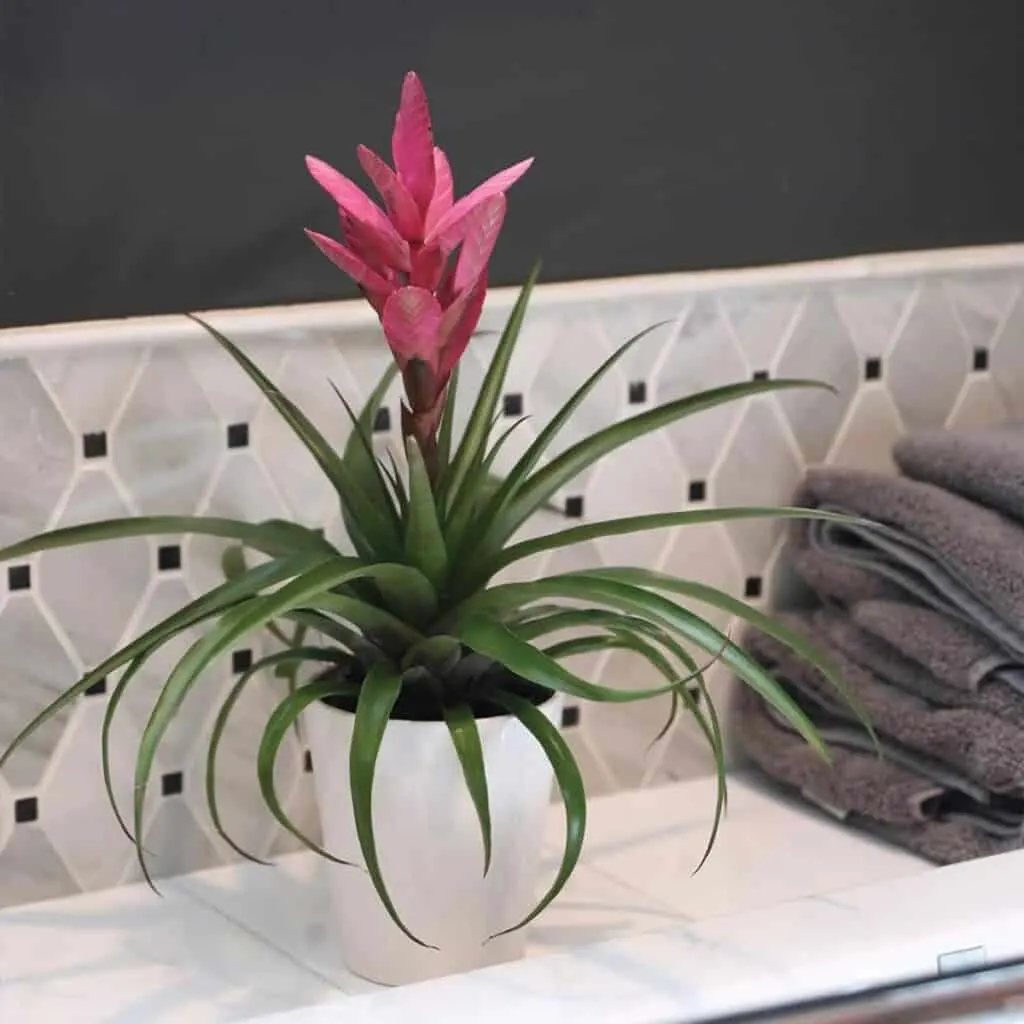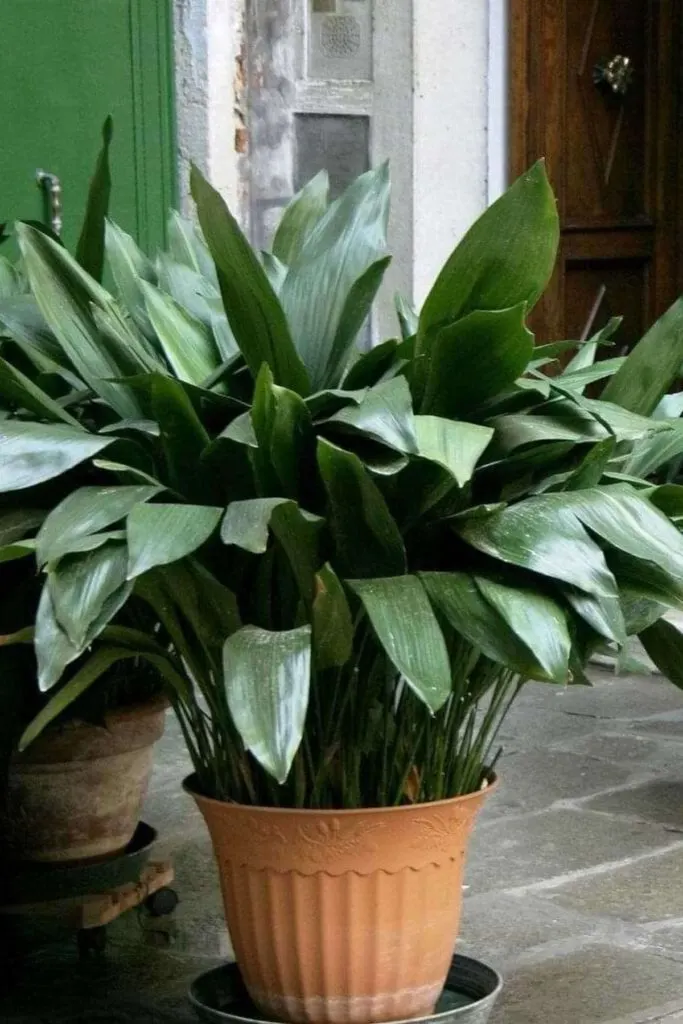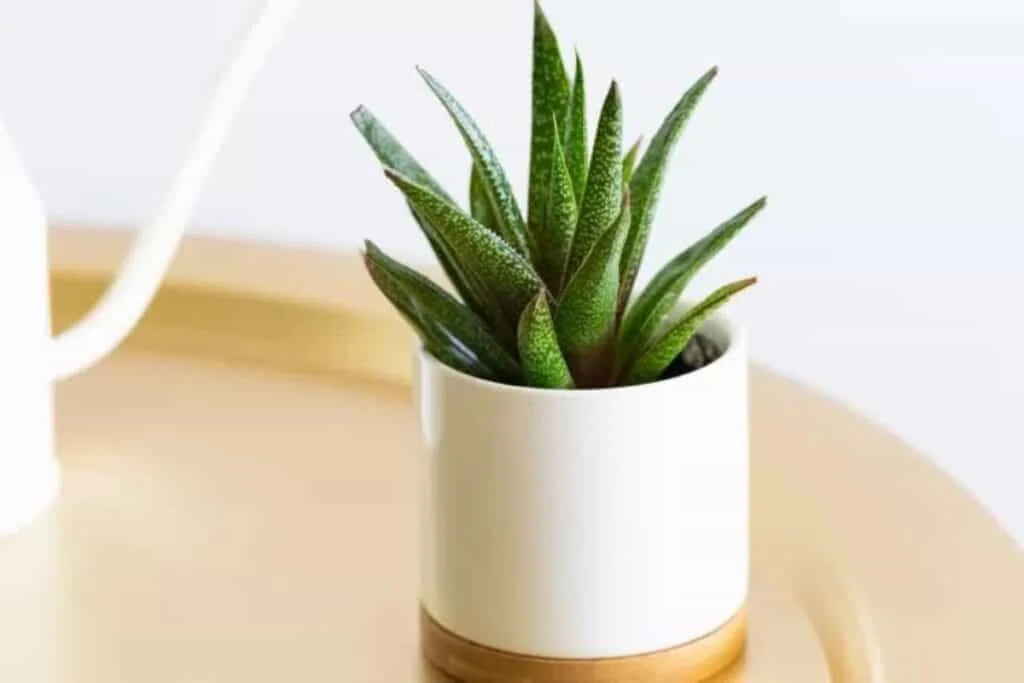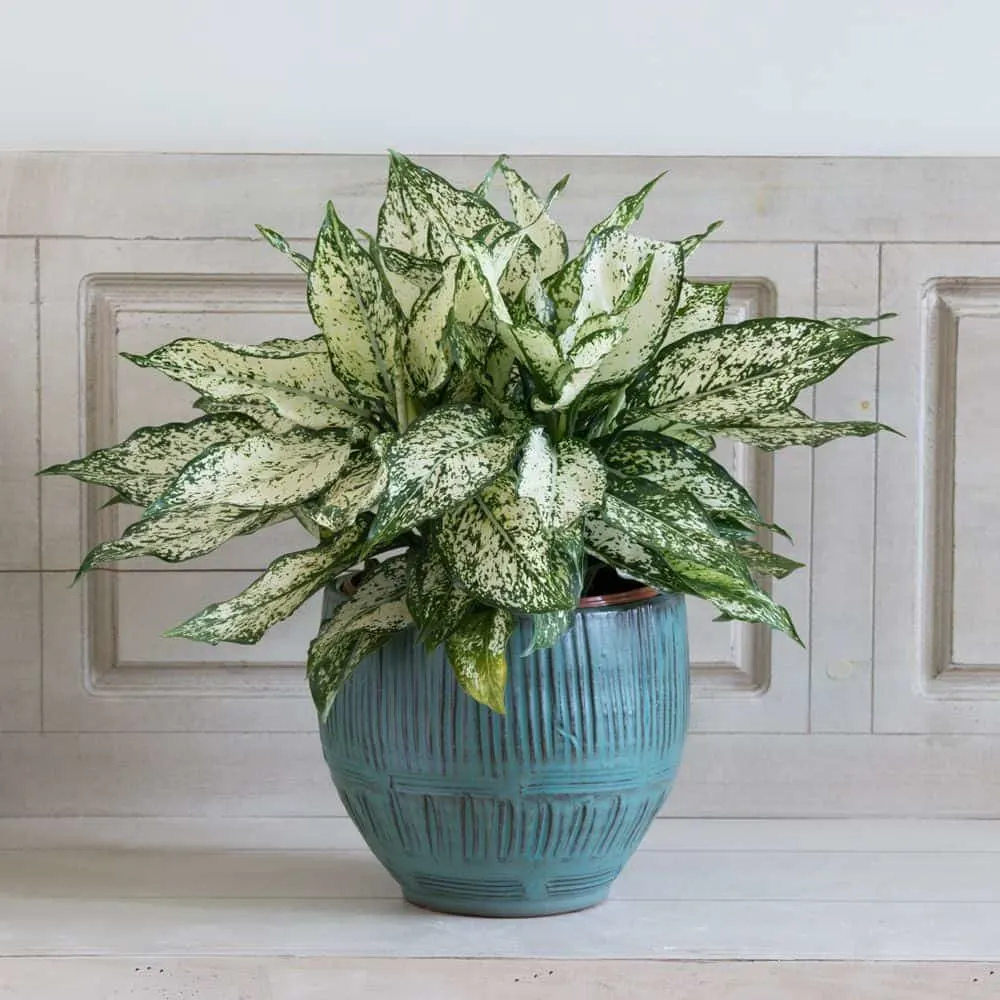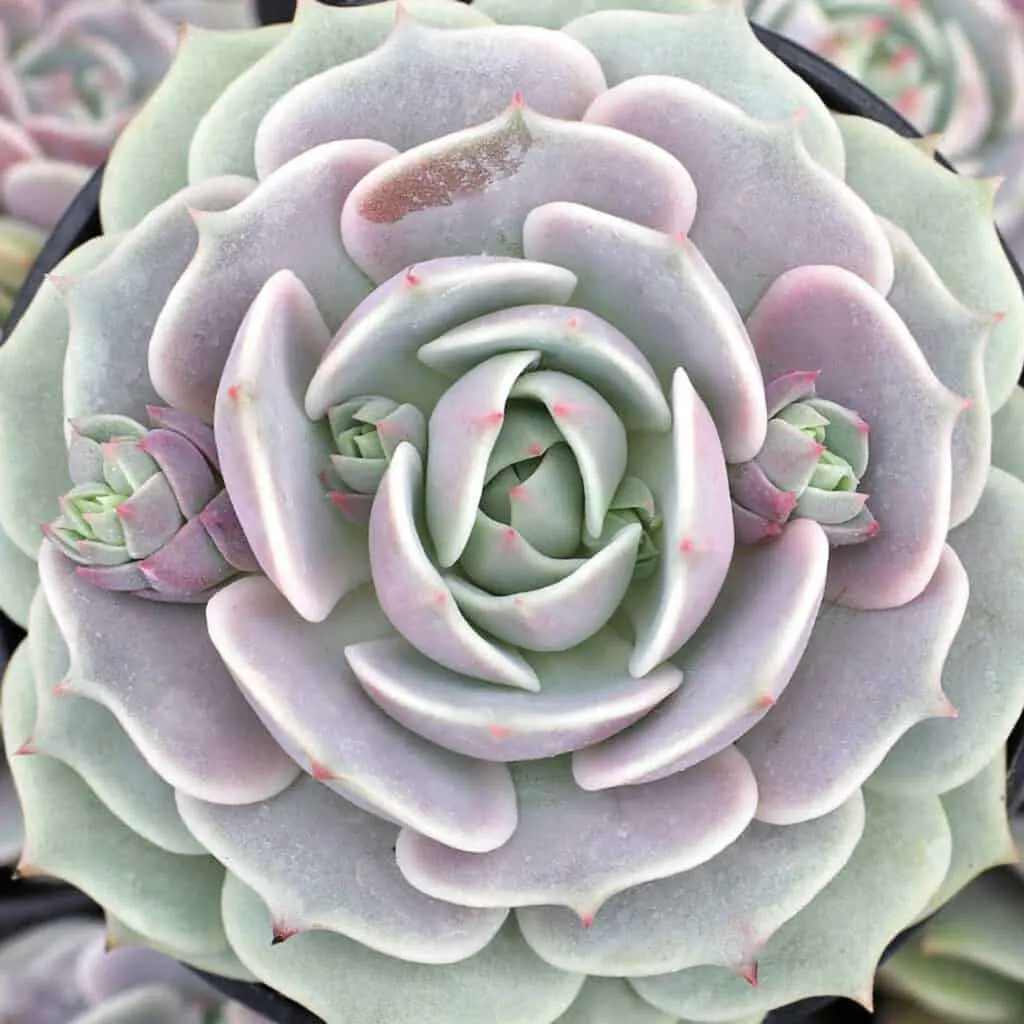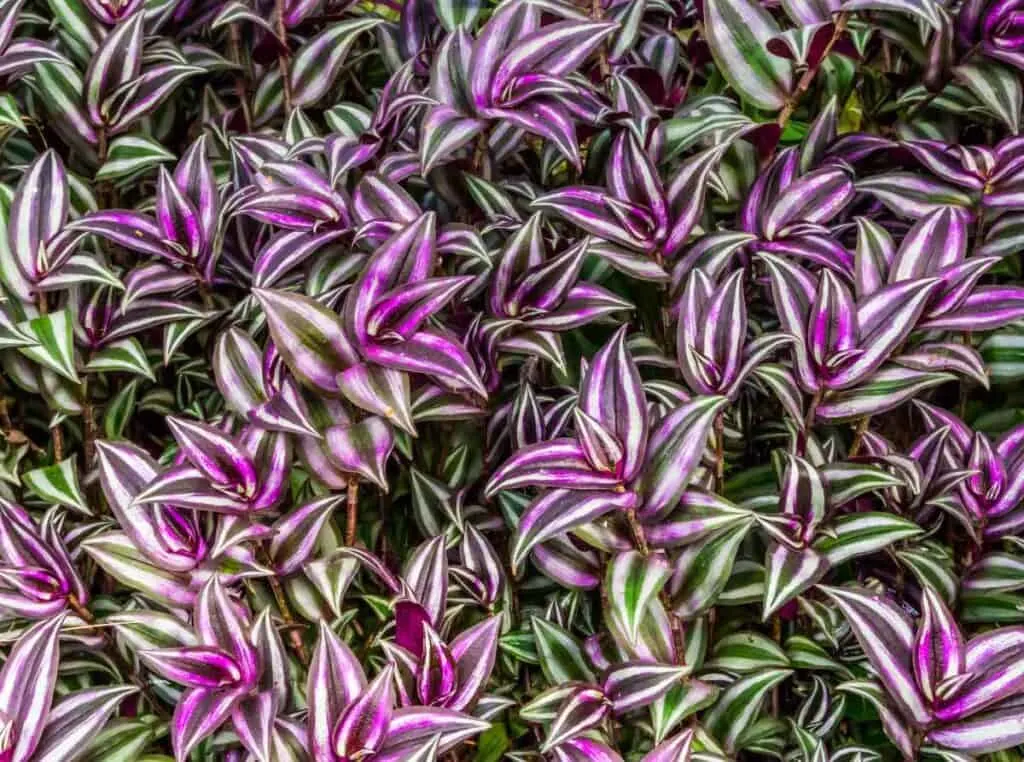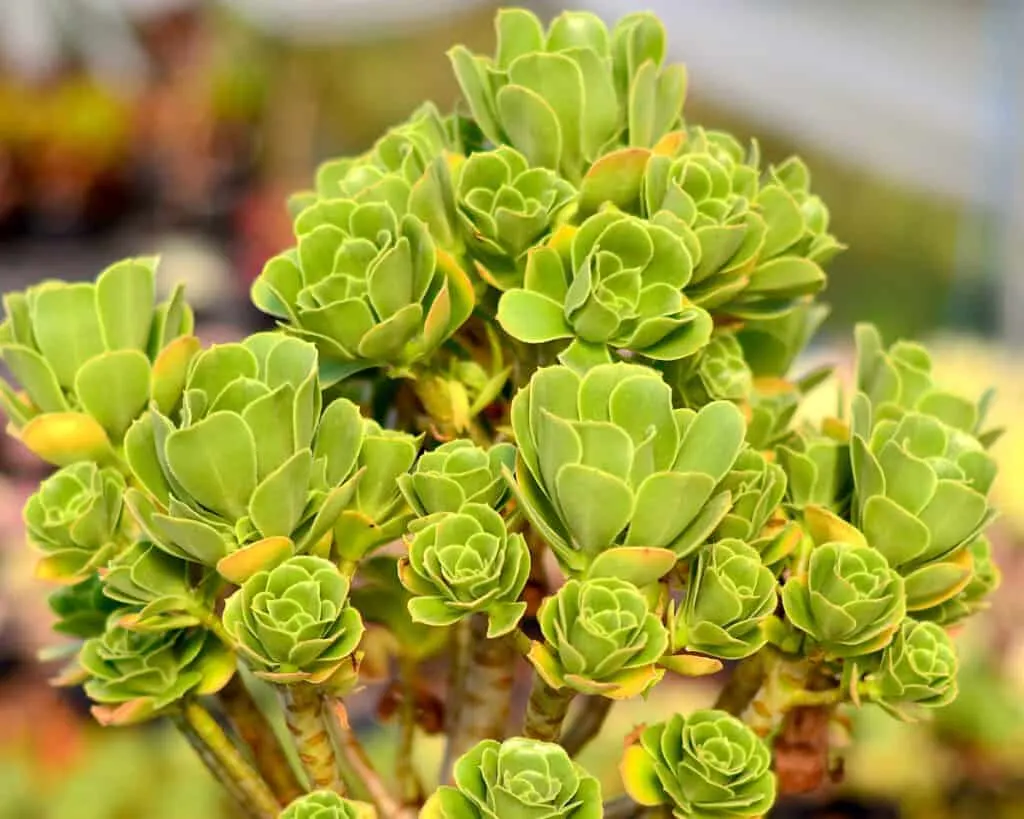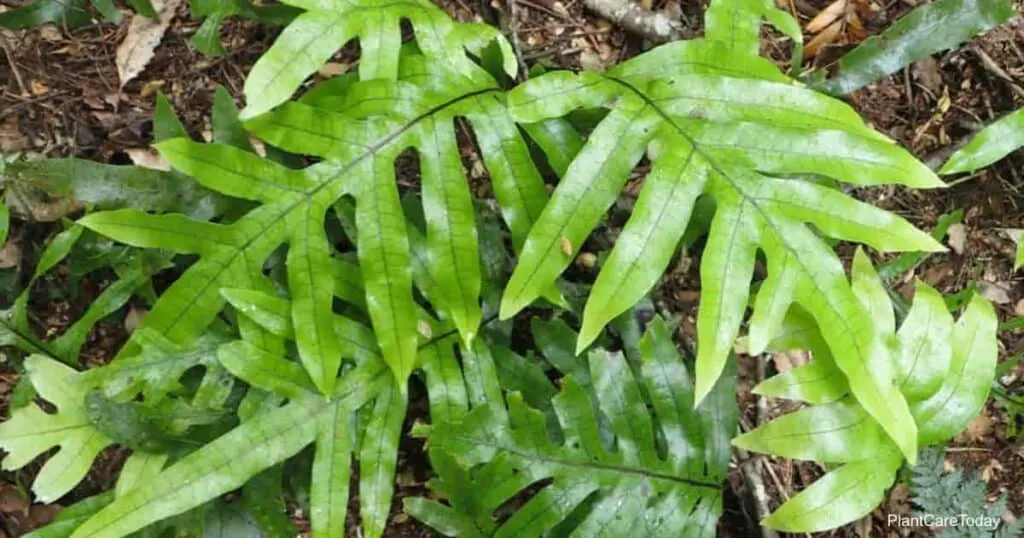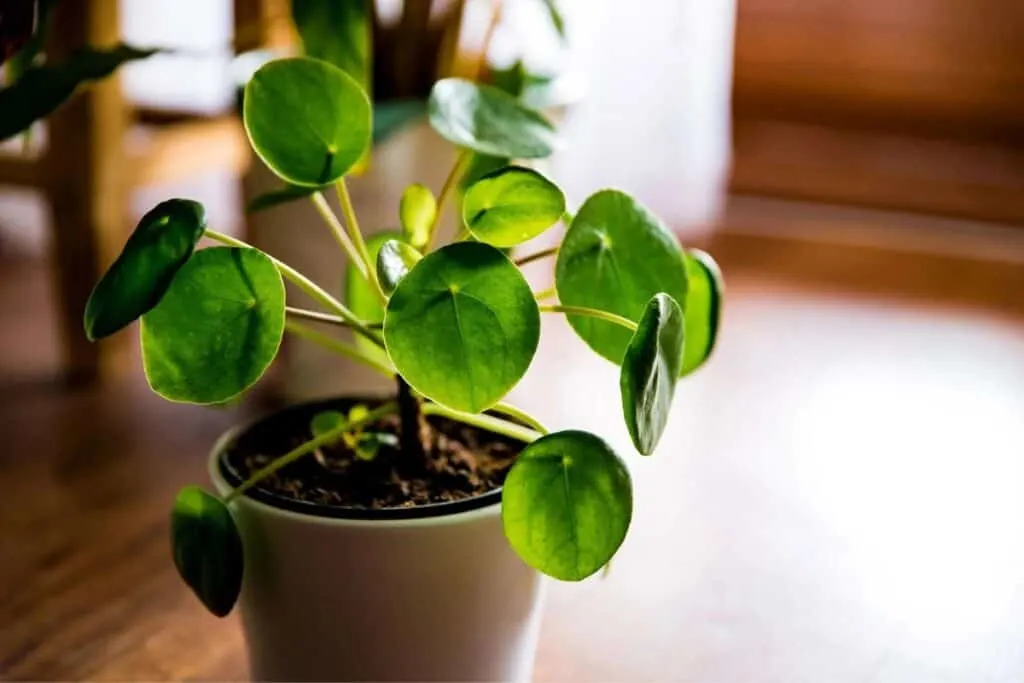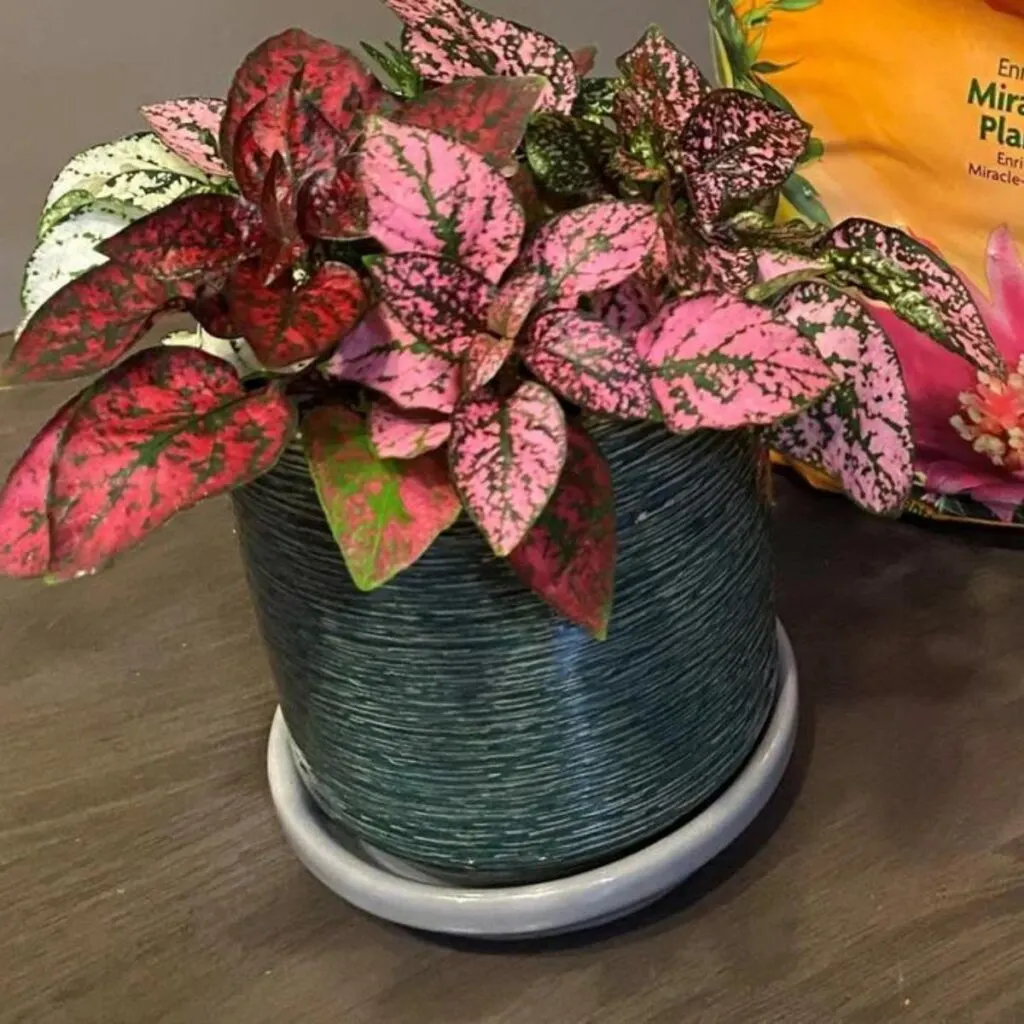The best houseplants for beginners are the ones that are easy to grow and always look amazing. Today I will be sharing the best ones for the beginner plant owner.
Houseplants have seen a resurgence in popularity and it’s not really surprising. They bring a breath of fresh air to our homes. Some of them even help purify the very air we breathe.
Plants are also being used by designers as the perfect accessory. Bringing not only a great pop of color but a much needed texture to a space.
If you are new to this whole plant care thing I have your back! I have some really easy plants that will survive if you forget to water them, or will be traveling a lot.

Tips for Beginner Plant Owners
One of the first things you should consider when buying a new plant is the amount of light your space gets and what the requirements are for the plant you want to buy. If the plant isn’t receiving the correct amount of light then it won’t thrive and you won’t enjoy the benefits of it.
You need the right pot for the plant. Most plants need really good drainage which means picking a pot that has drainage holes. If the pot doesn’t have drainage holes then you should add some.
Make sure you give your plant the proper amount of water. Overwatering can result in leaves turning yellow and falling off. Underwatering can cause your plant to lose leaves and droop.
As your plant grows you might have to repot it in a larger container. If you don’t then the plant can become root bound which will result in it not to thrive.
Keep the temperature and humidity stable in the room you have plants. They don’t like it when the temperature fluctuates largely. And some plants require a humid environment so a humidifier might be needed.
Remove any dead leaves that you see on the plants. This will help the plant send nutrients to the other leaves.
Best Houseplants for Beginners
Boston Fern
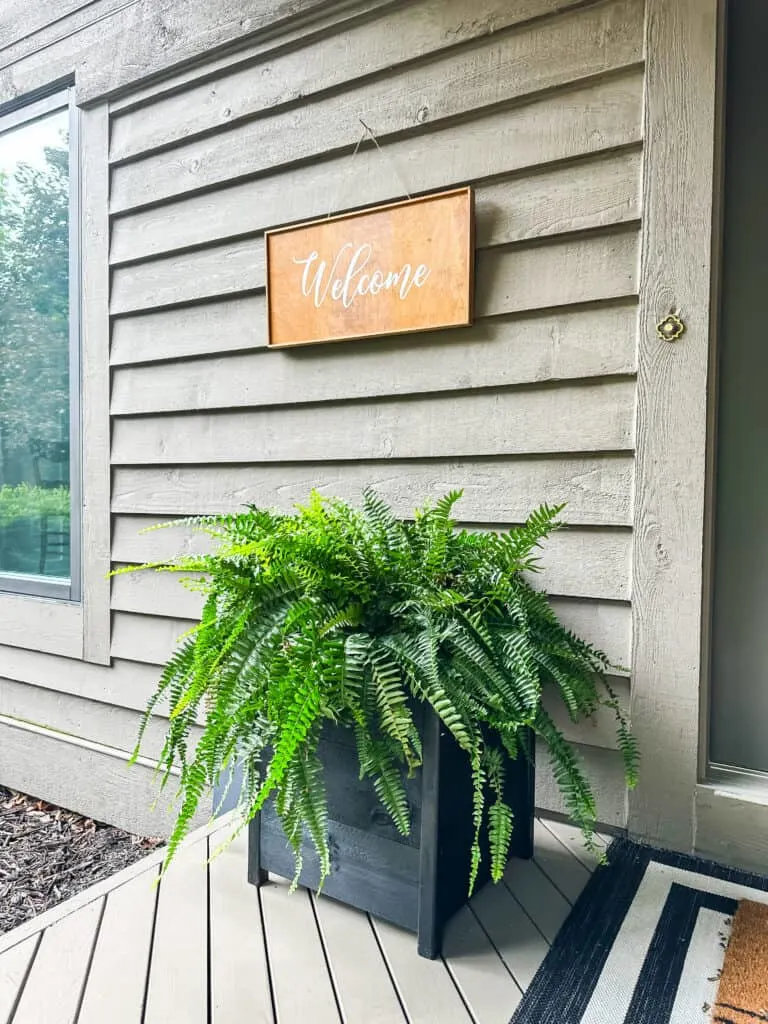
The Boston Fern is considered a classic houseplant because it’s easy to care for. It doesn’t require a lot of sunlight. It’s also a slow grower.
This plant likes partially shaded areas such as forests. It also thrives in swampy and humid areas.
Air Plant
Air plants are quite unique because they require no soil to grow. The main thing they need is air!
While air plants don’t require soil they do require water. Once a week you need to submerge the plant in water for about half an hour. Then shake the water off and turn it upside down and let it dry out. Then replace it where it belongs.
You can also mist the plant every couple of days in the winter months when humidity is low in our homes.
As far as light requirements they love a brightly lit spot that is out of direct sunlight.
Mini Monstera
Mini Monstera aka Rhaphidophora Tetrasperma is actually not related to the Monstera plant at all. It is named this because it looks a lot like the Monstera plant.
Mini Monstera is a climbing plant that likes partial sunlight and a temperature between 65 and 80 degrees. Keep the soil moist and feed regularly with fertilizer in the spring and summer months.
Monstera Deliciosa
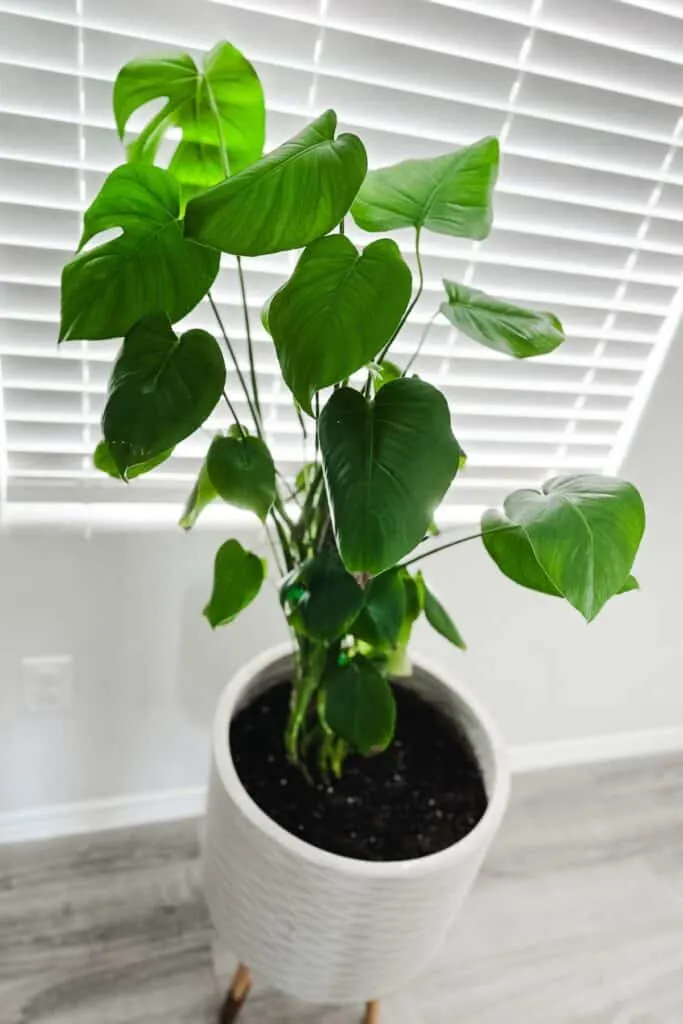
Monstera Deliciosa aka swiss cheese plant is an easy to grow plant. It grows about 1 to 2 feet per year!
It prefers warmer climates and likes partial sunlight and temperatures between 65 and 80 degrees. Water regularly every one to two weeks and let the soil dry out a couple of days in between waterings. In the winter months mist every couple of days.
Zebra Plant
The Zebra plant is well known for its beautiful striped leaves but its glory is the beautiful golden flowers that it produces in the late summer/early fall. These flowers usually last about 6 weeks.
This plant likes a moist soil at all times. It also prefers a more humid area, 60 to 70 percent. You might need to put a humidifier in the area of the plant in the drier months. And mist with a spray bottle to keep the plant happy.
Philodendron
There are two kinds of Philodendrons, the climbing type, and the upright type. The upright type tends to have larger leaves and ar more compact.
This plant prefers indirect sunlight and a moist soil. But it doesn’t like to sit in very wet soil so make sure the water drains through the holes and it doesn’t sit in water.
ZZ Plant
ZZ plants are one of the easiest to care for plants that’s why they are perfect for the beginner. They are slow growing and get to be about 2 to 4 feet tall and wide.
This plant prefers indirect sunlight but can handle low light. If it becomes leggy then it isn’t getting an adequate amount of light.
This plant is also drought tolerant so water once every two weeks and make sure the soil dries out completely in between waterings.
Maidenhair Fern
Maidenhair Fern is a slow-growing deciduous fern that prefers indirect or dappled sunlight. It likes to have as moist soil to make sure you don’t let it dry out. Fertilize your fern once a month to keep it healthy.
Holiday Cactus
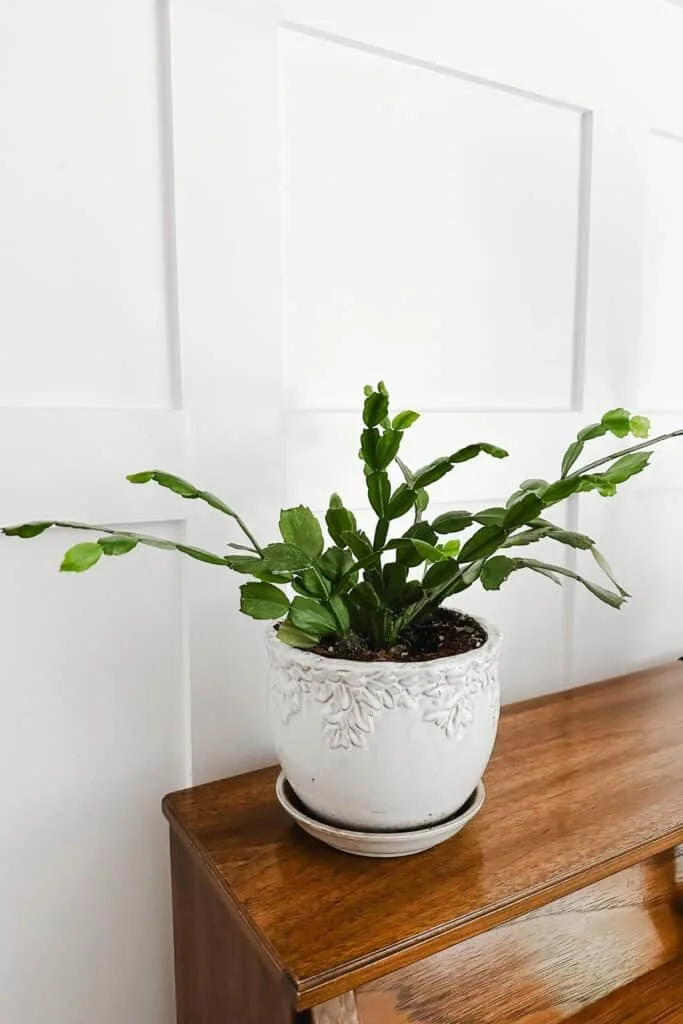
There are a few types of Holiday Cactus. Some bloom in the Spring and are often called Easter Cactus and others bloom between November and January. These are often called Christmas Cactus or Thanksgiving Cactus.
They prefer bright indirect light and frequent watering if the soil drains well. If the soil holds water then let them slightly dry out in between watering.
Jade
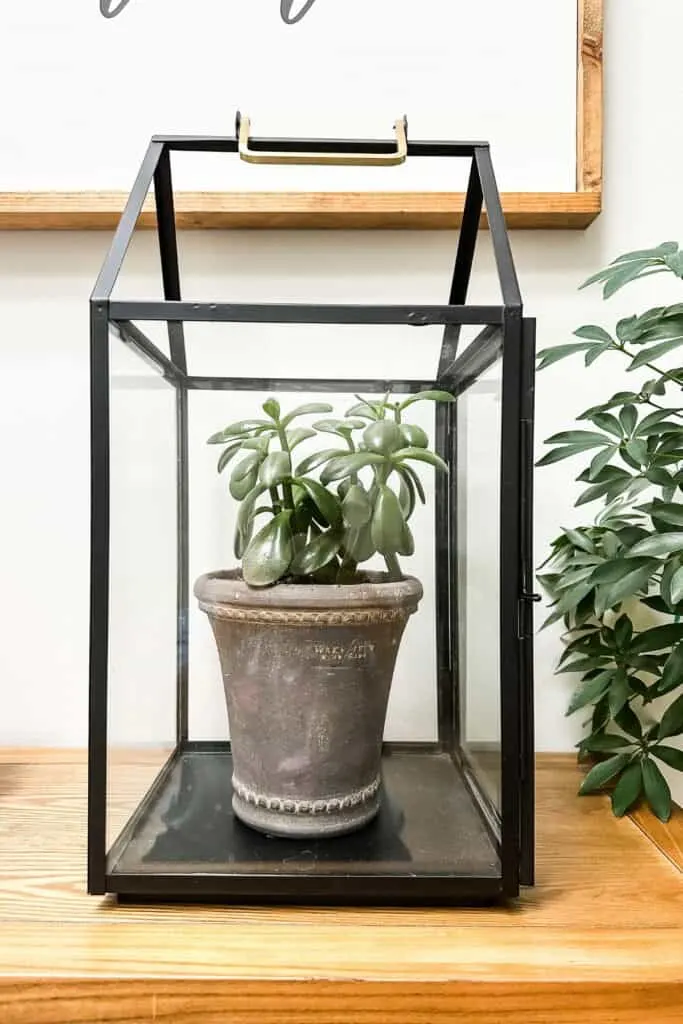
The Jade plant is a succulent that is very easy to grow. This plant is slow growing and prefers a bright window for light.
It’s best to plant Jade in succulent soil and water frequently in summer but less so in the winter months.
Peace Lily
Peace Lilys are a hardy plant an very easy to care for. They are well known for being an air purifying plant.
Peace Lilys are great for spaces with low light. In the Spring and Summer months use an organic fertilizer to help them bloom.
This plant likes a lot of water at once but likes to dry out in between watering. If your Lily starts to droop then you know it needs to be watered.
Prayer Plant
Prayer Plants prefer a moist environment with well-draining soil. It requires indirect sunlight, never direct light as the leaves will get washed out and develop brown spots.
Never let the soil dry out on this plant but make sure it is well-draining soil so it doesn’t develop root rot. Because this plant loves moist areas you can place a humidifier near it or put it on a tray with water and stones. You can also mist the leaves with room temperature or warm water.
English Ivy
English Ivy is an evergreen perennial that can be used as ground cover or a climbing vine. It does really well in baskets or hanging pots where the leaves can trail down.
This plant grows really well in part shade to shade and prefers loose well-drained soil. It prefers to be slightly on the dry side so make sure you don’t overwater.
Pothos
Pothos is a very easy to care for plant that is popular because of its trailing leaves. It is a fast-growing plant often adding about 12 inches a year.
This plant prefers bright indirect light and but it can also do well in low-light conditions. This makes it a popular plant for offices.
Make sure your Pothos dries out in between watering otherwise the roots will begin to rot. It will let you know when it’s time to water because it will start to droop.
Spider Plant
Spider Plant is well known for its ease of care and its air-purifying abilities. They prefer well-drained soil and don’t like to be too wet or too dry.
In the summer months mist often to encourage growth. You will see small spider looking growths at the ends of leaves known as pups. These can be taken off to create new plants.
Snake Plant

Snake plant is a great beginner plant because it is easy to grow and very hardy. They tolerate low light or bright indirect light. It loves warm weather and is drought-tolerant.
They love loose well-drained soil, the more sandy the better. Only water when the soil is dry, every two weeks in the summer, and once a month in the winter.
Bromeliads
Bromeliads are widely available and require medium to bright indirect light. They prefer more shallow containers and loose soil.
Bromeliads like high humidity so set them in a tray with rocks and water. Just be sure that the roots are not sitting in the water or they will develop root rot.
Lucky Bamboo
Lucky Bamboo is native to China and can have many different meanings depending on how many stalks the plant has. This plant is nearly indestructible which makes it perfect for beginner plant owners.
This plant prefers bright filtered sunlight but avoid direct light because it will scorch the leaves. It does well in well-drained soil but it can also be grown in a vase of water. Just make sure you change the water once a week.
Aloe
Aloe is a very popular houseplant because it has air-purifying abilities. It’s also known for its medicinal benefits helping with acne, wrinkles, and easing irritation caused by sunburn.
This plant is very tolerant of infrequent watering just make sure you use a succulent soil so it drains well. Also, terra cotta pots dry out faster so they are great for use with the Aloe plant. Water about once every two weeks and put it in a bright sunny space.
Cast Iron Plant
The Cast Iron Plant is a great plant for beginners because it is so hard to kill. It can tolerate low light, irregular watering, and can handle a range of indoor temperatures. This plant survives where many would die.
The leaves can reach 2 feet long. It grows slowly in low light and faster in more sunlight. But direct light will burn the leaves so indirect is best.
Ox Tongue
Ox Tongue is related to the Aloe plant and is similar in look. They can handle a wide variety of light from low light to some direct light.
They are succulents so they can handle going a while in between watering. Give them a good amount of water then let them completely dry out.
Chinese Evergreen
Chinese Evergreen is a tropical perennial that blooms in spring and summer. They are slow growing typically topping out at 1 to 3 feet tall.
There is a trick to knowing how much light to give your plant. The lighter the leaves the more sunlight they need. So it all depends on the plant you have as to the amount of sunlight to give it.
It also loves warmth and moist soil. It likes to have a temperature of over 70 degrees. The type of soil you use is not a big deal for this plant.
Donkeys Tail
Donkey’s Tail is a succulent that is slow growing but can get up to 4 feet in several years. They typical length is 2 feet. It is grown indoors mostly but can be grown outside.
This plant loves several hours of sunlight a day and is best when you tend to forget about it. It being a succulent it doesn’t need to be watered very often. Succulent soil is best for this particular plant.
Echeveria
Echeveria are very popular and are fast-growing succulents. They love lots of sunlight and require about 4-6 hours a day. Since they are succulents they don’t require a ton of water.
Do not let water sit on the leaves as this can make the leaves rot. Also, make sure you remove any dead leaves as this becomes a haven for bugs.
Wandering Jew Plant
There are many different varieties of Wandering Jew plants. Some with sold leaves to ones that are heavily variegated and of different colors.
This plant loves bright, indirect light. If it doesn’t get enough light the bright foliage will begin to fade. They don’t like to be soaked in water or too dry. They prefer to have an even moist level at all times.
Aeonium
Aeonium consists of a genus of about 35 species that have waxy leaves in rosettes. They store water in their leaves so they have a more shallow root structure and prefer soil that is moist but not too wet.
This plant is considered a succulent so therefore requires a lot of bright direct light a day, about 6-8 hours. It also does really well when planted in succulent soil.
Kangaroo Fern
Kangaroo Fern is one of the easier plants in the fern family to take care of. The leaves are much wider than it’s relatives.
This plant loves bright indirect light. It loves higher humidity so you might have to place a humidifier near it or put it on a tray with rocks and water. It needs to be watered regularly keeping the soil nice and moist.
Chinese Money Plant
Chinese Money Plant aka Pilea Peperomioides is loved for its unique foliage. This plant loves medium to bright indirect light. If it doesn’t have enough light the leaves will grow smaller, grow fewer offshoots, and become leggy.
Allow the plant to completely dry out in between watering. The leaves will start to droop when it needs water.
Money Tree Plant
The Money Tree Plant is an easy to care for and tough plant which makes it ideal for the beginner plant owner. It does well even in low-light conditions but prefers bright indirect light.
Water this plant once every one or two weeks and allow the soil to almost go dry in between. This plant also loves a more humid environment, somewhere around 50%.
Heartleaf Philodendron
The Heartleaf Philodendron, also known as the sweetheart plant, has dark green leaves but when they first emerge they are more of a coppery color. This makes this plant very visually appealing.
This plant has a tendency to grow very long stems. You should trim them to promote more growth.
It loves bright indirect light and regular watering. Make sure when you water you use room temperature water or tepid. Cold water will shock it.
Polka Dot Plant
Polka Dot Plant commonly has brightly variegated leaves flecked with pink. Some can have flecks of purple, white, or red.
This plant loves warm humid spaces and bright indirect light. It requires well-drained soil and to be kept moist at all times. Water when the top inch is drying out.
Let’s Review the tips for Best Houseplants for Beginners:
- Understand the light in your space and what your plant needs
- Make sure your pot has a drainage hole
- Give your plant the correct amount of water
- Repot when necessary
- Keep the temperature and humidity stable
- Remove dead leaves
Other plant posts you might like:
- 14 Plants and Trees that Repel Mosquitos
- The 13 Best Deer Resistant Plants and Flowers
- Simple and Cheap Front Yard Landscaping Ideas
- The Ultimate Guide to Snake Plant Care
- 30 of the Best Pet-Friendly Plants That are Safe for Cats and Dogs


The Best Houseplants for Beginners
As a licensed Real Estate Agent and an avid home decorator, I strive to give my clients the very best I can when it comes to staging, selling, and decorating their homes. I have lots of experience with paint color choices and love to DIY my home so I can have everything just the way I want it. I share my ideas and projects with the world in the hopes that I can help others have their homes just the way they want as well.


